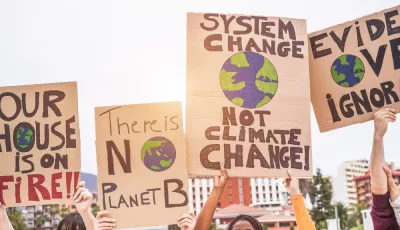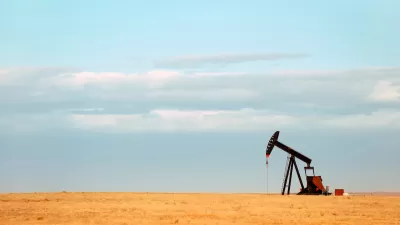APA’s third annual Trend Report for Urban Planners is out and offers a comprehensive look at potential drivers of change that could impact communities and the work of planners for decades to come.

The American Planning Association (APA), in partnership with the Lincoln Institute of Land Policy, recently released its annual Trend Report for Planners. The report provides insights into 100 existing, emerging, and potential future trends to help planners in their current and long-range planning work.
Trends are organized into three time frames — Act Now, Prepare, and Learn and Watch — and then grouped into themed clusters. Of the trends needing immediate action, planners likely will not be surprised to find climate change, housing, transportation, and artificial intelligence. Less expected, however, may be the value of youth involvement in planning processes and the impacts of growing political polarization and societal division on planners’ work.
Looking to the future, the themes in the Prepare and Learn and Watch touch upon the changing economic landscape, including changes in work and retail; how new technologies and innovations will affect the world, and potentially universe, around us; and longer term implications of and potential solutions for climate change.
The report concludes that, “knowing about these external drivers of change, understanding how they may impact our communities and the work we do, and preparing for and proactively including them in our plans for the future of our communities is more important than ever before.”
FULL STORY: 2024 Trend Report for Planners

Manufactured Crisis: Losing the Nation’s Largest Source of Unsubsidized Affordable Housing
Manufactured housing communities have long been an affordable housing option for millions of people living in the U.S., but that affordability is disappearing rapidly. How did we get here?

Americans May Be Stuck — But Why?
Americans are moving a lot less than they once did, and that is a problem. While Yoni Applebaum, in his highly-publicized article Stuck, gets the reasons badly wrong, it's still important to ask: why are we moving so much less than before?

Using Old Oil and Gas Wells for Green Energy Storage
Penn State researchers have found that repurposing abandoned oil and gas wells for geothermal-assisted compressed-air energy storage can boost efficiency, reduce environmental risks, and support clean energy and job transitions.

Updating LA’s Tree Rules Could Bring More Shade to Underserved Neighborhoods
A new USC study finds that relaxing Los Angeles’ outdated tree planting guidelines could significantly expand urban tree canopy and reduce shade disparities in lower-income neighborhoods, though infrastructure investments are also needed.

California's Canal Solar Projects Aim to Conserve Resources and Expand Clean Energy
California’s Project Nexus has begun generating electricity from solar panels installed over irrigation canals, with researchers and state agencies exploring statewide expansion to conserve water and boost clean energy production.

HHS Staff Cuts Gut Energy Assistance Program
The full staff of a federal program that distributes heating and cooling assistance for low-income families was laid off, jeopardizing the program’s operations.
Urban Design for Planners 1: Software Tools
This six-course series explores essential urban design concepts using open source software and equips planners with the tools they need to participate fully in the urban design process.
Planning for Universal Design
Learn the tools for implementing Universal Design in planning regulations.
Heyer Gruel & Associates PA
City of Moreno Valley
Institute for Housing and Urban Development Studies (IHS)
City of Grandview
Harvard GSD Executive Education
Salt Lake City
NYU Wagner Graduate School of Public Service
City of Cambridge, Maryland





























